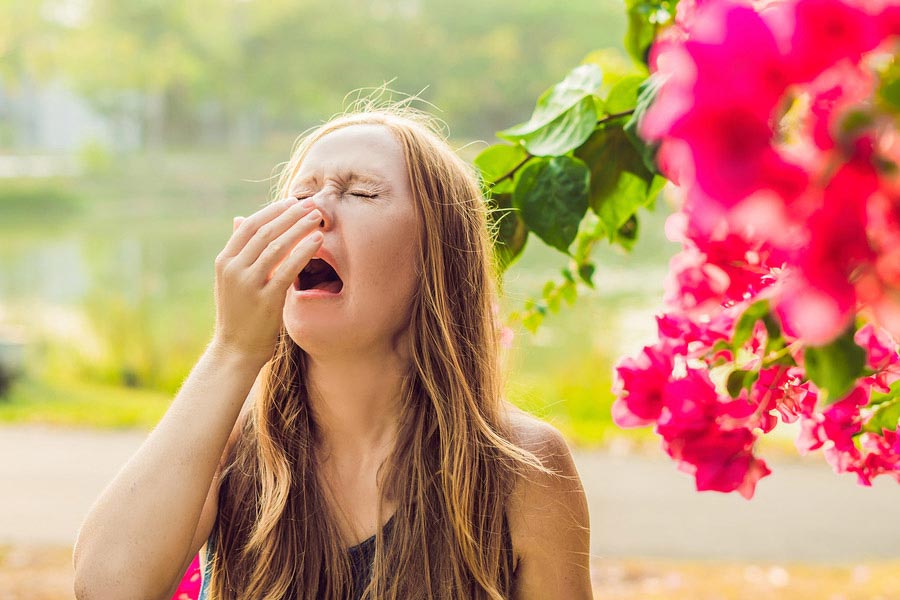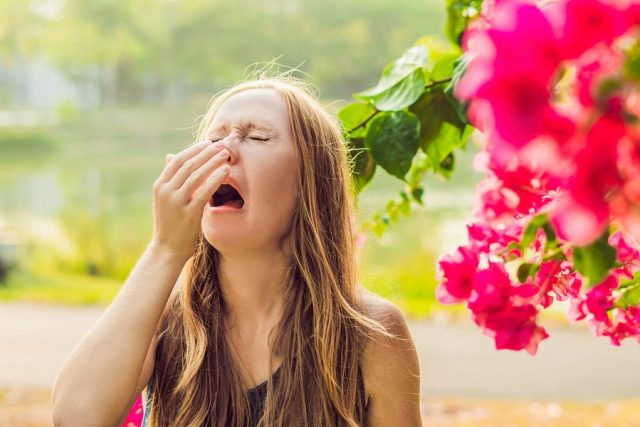Reviewed by Phillip Waite, Ph.D.

It’s springtime! It’s also allergy time for many people. Terms such as “rose fever” and “hay fever” are misnomers. Seasonal allergies in the Spring are due mainly to tree and grass pollen. The pollen of most flowering plants is not airborne, but carried by bees and butterflies, so it usually does not affect people with allergies. Hay fever season arrives in late summer and can last into October. The airborne allergens at that time of year are from ragweed and other weed pollens.
A more accurate name for rose and hay fever is allergic rhinitis. Symptoms include sneezing, runny nose, congestion, and itchy, watery eyes. Treatment for allergic rhinitis is discussed at the American Academy of Allergy, Asthma, and Immunology.
Other allergens contribute to (or cause) allergic rhinitis such as mold spores, dust mites, and animal dander. Mold spores can be outside at any time of year, except when snow covers the ground. Indoors, mold is found on houseplants and in damp places such as basements and bathrooms. Dust mites are microscopic creatures that eat skin particles and dander. You can reduce the dust mite population, but they are probably almost impossible to totally remove from your home. Some hints to deal with dust mites include:
- change your furnace filters monthly
- use non-allergenic, washable bedding
- enclose mattresses and box springs in non-allergenic plastic covers.
- eliminate carpeting and upholstered furniture from the allergic person’s bedroom
There are also hints to help you decrease your exposure to pollen and mold spores as well. Here are a few:
- Keep in mind that pollen can easily travel for many miles, so the pollen in the air may not be from the things that grow in your neighborhood.
- During allergy season keep your windows closed and the air-conditioning on.
- Pollen is often worse in the early morning hours, so it’s better to limit outdoor activities from approximately 5AM-10AM.
- Stay inside on windy days – there are more airborne allergens in the air then.
Another hint frequently mentioned is to see your physician for proper diagnosis and treatment.
You can also check pollen and mold spore levels at the National Pollen Network . This site has daily updates of national pollen and mold spore maps. AAAAI offers pollen and mold spore counts for specific regions of the U.S.
Did you find this article helpful? Join us at HealingWell for support and information about Allergies. Connect and share with others like you.
Colleen Kaemmerer was a contributing editor to Suite101.com’s Allergies site.




